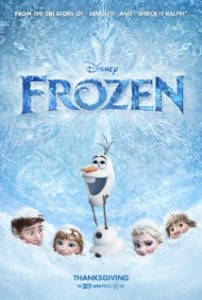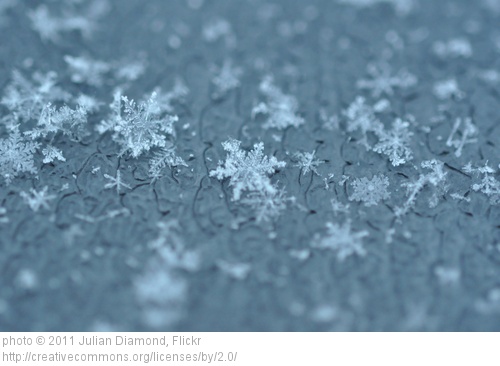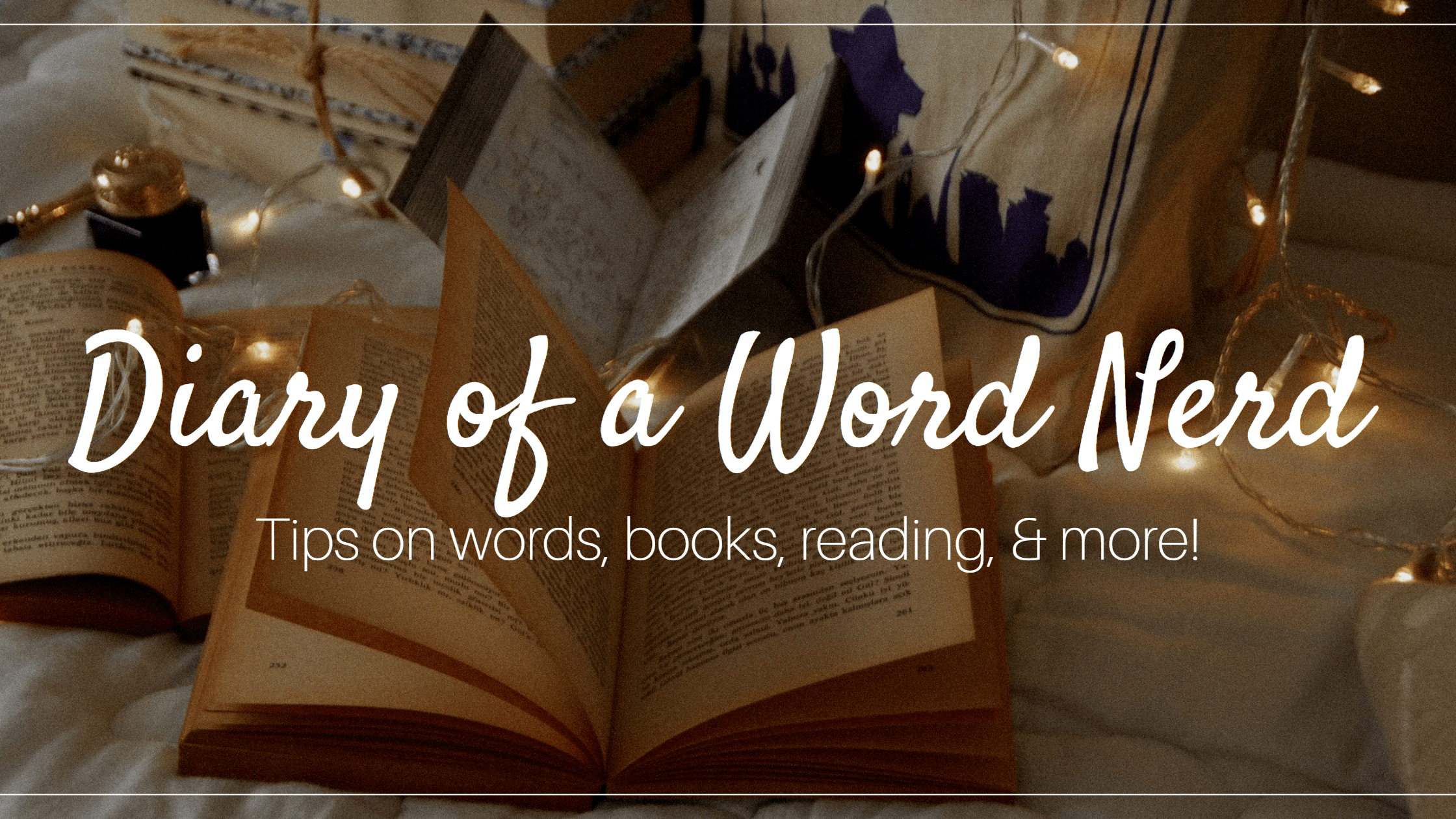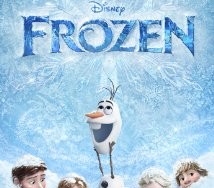 Welcome to Wondrous Words Wednesday, a great way to learn new vocabulary. Visit Kathy at Bermuda Onion for links to more interesting words from books and life.
Welcome to Wondrous Words Wednesday, a great way to learn new vocabulary. Visit Kathy at Bermuda Onion for links to more interesting words from books and life.
My word today comes from the movie Frozen. Perhaps you’ve heard of it, even if you don’t have children who watch it five times a week? My daughter and I didn’t see it until a month ago. (Shocking, I know!) We were put off by the princesses, but now, Frozen is my favorite Disney movie ever, because it shatters all the typical stereotypes:
- The apparent “Prince Charming” turns out to be a jerk.
- The apparent “Prince Charming” gets punched by one of the princesses. (My daughter’s favorite part.)
- The act of true love involves one sister sacrificing for the other- not a broad chested knight on a powerful steed.
 The most popular song from Frozen, called “Let It Go”, has a word that perplexes me and my children: fractals.
The most popular song from Frozen, called “Let It Go”, has a word that perplexes me and my children: fractals.
My power flurries through the air into the ground
My soul is spiraling in frozen fractals all around.
My daughter thinks it means particles, but I decided to look it up. Good thing I did.
fractal \’frak-təl\ noun; from French fractale and Latin fractus meaning broken; any of various extremely irregular curves or shapes for which any suitably chosen part is similar in shape to a given larger or smaller part
Whew. That’s a mouthful. Here’s another more succinct definition from the Fractal Foundation website:
A fractal is a never-ending pattern. Fractals are infinitely complex patterns that are self-similar across different scales.
Fractals have to do with math and patterns, and we can find them readily in nature. My guess is that the “frozen fractals” from the song are the repeating patterns in snow flakes. (Note the clever use of “flurries” as a verb in the preceding line.) I love the idea that nature has mathematically predictable patterns- it reinforces my belief that a higher power created our world with a plan in mind.

Word Nerd Workout
Think of where you have seen, or might see, fractals. Turn to nature to help you. Where are there repeating patterns that look similar in different sizes? Share them in the comments.
Also, thinking ahead to summer, check out the Fractal Foundation website for some cool math fractivities.
If patterns interest you, check out my post on tessellations.
For some words to make you smile, visit Eli at Coach Daddy; today is Honest Day, but he’s collected some six word lies (about chocolate, bacon, exploding diapers and housework) that will have you chuckling!
Thanks for getting nerdy with me today!
Julia


The word “fractal” first appeared in 1975. Is that appropriate to the culture represented in Frozen?
Interesting; I didn’t know that. Since Frozen is a work of fiction, I’m going to let Disney get away with this…
I guarantee Elsa doesn’t know what a fractal is either.
What a wonderful Disney movie. Thanks for naming the reasons that I agree on 100%, also ehrm… the princesses and stuff, wide eyed and small hipped, less of a recommendation… but YES! FRACTALS! I love fractals.
I even looked up how snowflakes are actually made last week, because we did some paper snowflakes and I wondered why it is always a six-pointed shape.
Well… professor Bejan explains: http://youtu.be/8hFo23ZJ6YU!
And did you know, *heat* flows through snowflakes? Who knew, right?
Tess, this is fascinating! And it makes sense that there would be a “growth architecture” for snowflakes, considering how they are formed. Thanks for sharing this link. My kids will love it! What a great resource.
I agree with your concerns regarding huge eyes and small hips… I’m constantly pointing out characteristics of females that the media exaggerates and asking my daughter “What are they trying to sell here?”
It’s nice to meet you. I tried to visit your site, but Chrome couldn’t translate it for me. My father is Dutch, (my maiden name is Vanderwal) but unfortunately, I never learned the language. What do you write about on your site?
I wondered what a fractal was!!!! I was walking around our office asking if anyone knew! LOL Thank you for the information! I too enjoyed the movie and love the songs!
BTW, I forgot to mention but I also loved that movie for the same reasons as you! 🙂 <3
I came across your blog site interesting enough as I too was looking up the word ‘fractals’ from that line in the song “Let It Go” from the movie Frozen which I just saw last night (so don’t feel too bad!). I thought she might be referring to frost or snowflakes, but wasn’t sure. Thanks for the explanation. I too love words by the way, sometimes inventing them from time to time! 😉 <3
Oh yes! It’s fun to invent new words. Thanks for stopping by – I’m glad my post helped you out.
I would have guessed particle like your daughter! When I read the definition, my first thought was the leaves of plants like ferns.
I used to have school folders that had fractal designs on them. We finally saw Frozen as well! I like how it breaks stereotypes, although I thought there was a mixed message with the kiss at the end. (I also kind of wished the other sister had sacrificed instead.)
Good points, Jennifer, although at least Anna and Kristoff don’t get married. My daughter never really liked Elsa- maybe a sacrifice from her would make her more appealing. Thanks for stopping by!
I haven’t seen Frozen yet. Now I want to more than before. Thanks for shedding some light on fractals, I would have thought like your daughter. Particles or shards, definitely not uniform in shape.
Oh, it’s a great movie, Judy. Wonderful music and, as I said, a good story.
Are fractals related to the patterns that create tessellation patterns, like in an Escher drawing?
I think not, Dianne, because fractals aren’t all the same size, while tessellation patterns are uniform. Good links here: https://www.juliatomiak.com/2013/11/what-is-a-tessellation/
The tessellation sites and the fractals sites have cool stuff for teachers to use in the classroom. Do you teach math or only language arts?
Most fractals won’t tessellate, but the Dragon Curve is one that will. You can see examples here: https://en.wikipedia.org/wiki/Dragon_curve#Tiling
Cool! Thanks for sharing this!
A nice picture and word.
I wish I could take credit for the picture! It’s hard to capture snowflakes before they melt!
I always wondered what fractals were. I’ll have to tell my daughter – she plays Let It Go over and over while she’s in the shower. So like a dozen times.
Yup, same thing in this house. Makes for LONG showers.
1. I thought fractals were mid-sized cats of the African Sahara.
2. Frozen doesn’t seem to have an age limit – Exhibit A: My high-school daughter belting out “Let it Go” (although I’m not sure it wasn’t just to turn my nerves into fractals.)
3. Olaf had the best line of the movie – “some people are worth melting for.”
LOL Eli! Yes, Frozen appeals to all ages- it’s definitely one of my favorites. Olaf has a ton of great lines in Frozen. My favorite: when he’s singing his “Summer” song and says “I’ll be a happy snowman” as he jumps over a puddle (which is the perfect rhyme for the lyric as well as clever foreshadowing). Excellent example of irony. Thanks for stopping by!
I love your picture. I have heard the term fractal but thought it rather scientific. Not so much then.
Well, Jane, I think one can get pretty deeply scientific with fractals. There are several websites devoted to them, with lots of esoteric mathematical and scientific language. I gave the condensed explanation. 😉
My daughters finally saw Frozen a few weeks ago, and they LOVED it! I saw it before them on a plane ride to CA and knew it would be perfect for the girls. Yay for blasting stereotypes and showing the power of sisters and for not being too scary (Ursula is scary to little kids!). I wonder if the patterns in beehives qualify as fractals or if they are too uniform?
I’m not sure, Nicole. Great example of patterns in nature, though. Bee hives amaze me!